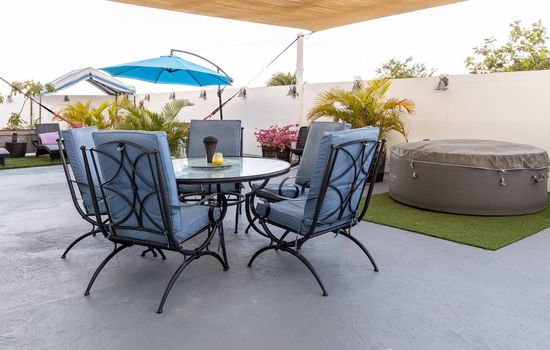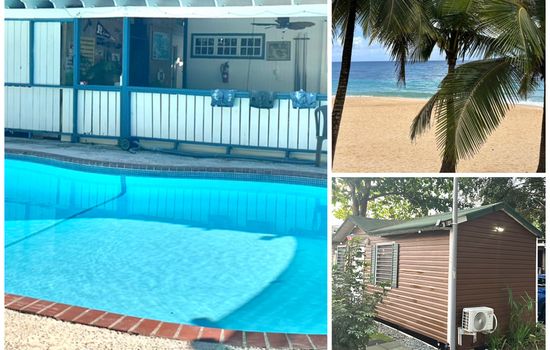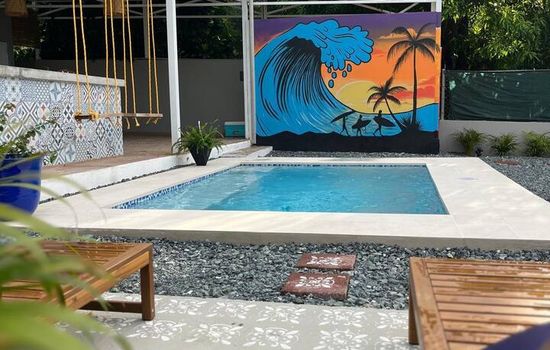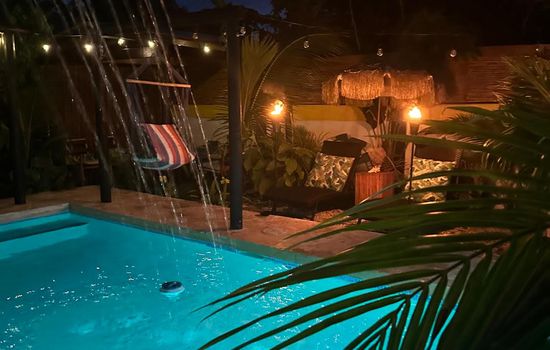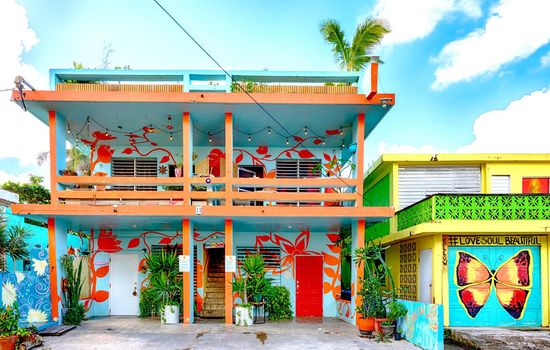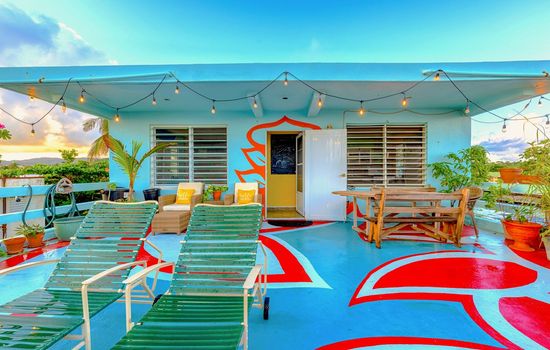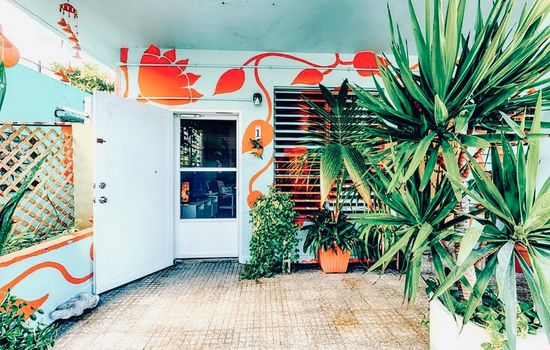The American Camp Visitor Center is open from 10 AM to 3 PM, Thursday through Monday, starting March 6, 2025. It is closed on Tuesdays and Wednesdays.
The entrance fee at San Juan National Historic Site is $10 per person, valid for 24 hours, with no vehicle or motorcycle fees. Children under 16 enter free. An America the Beautiful pass is also accepted.
From San Juan, take PR-1 highway to Old San Juan. Turn onto Norzagaray Street to reach the historic site, nestled within the city’s ancient fortifications.
Parking is available nearby at the Totem Structure across from the Institute of Culture. No overnight parking, no RVs or large vehicles, and no specific motorcycle parking. No fees mentioned.
Accessibility & permits
Emergency
- Cell service availability:Partial
Information not accurate?
Help us improve by making a suggestion.
San Juan National Historic Site, located in the heart of Old San Juan, Puerto Rico, is a testament to the enduring legacy of Spanish colonial architecture and military engineering. This UNESCO World Heritage Site, established in 1949, encompasses a series of fortifications that once protected the city from invaders, including the iconic Castillo San Felipe del Morro and Castillo San Cristóbal.
Perched dramatically on a rocky promontory, Castillo San Felipe del Morro rises 140 feet above the sea, its stone walls a stark contrast to the turquoise waters of the Atlantic. The site also includes Fort San Juan de la Cruz, situated on Isla de Cabras at the entrance to San Juan Bay, and significant portions of the city’s ancient fortress walls and bastions.
As visitors explore the historic fortifications, they are surrounded by the rich history of the Spanish Empire, with structures that span nearly five centuries. The Paseo del Morro National Recreation Trail offers a scenic walk along the city walls, providing breathtaking views of the bay and the city’s colorful colonial architecture.
Seasonal changes bring varying hues to the site; the lush tropical vegetation is a vibrant backdrop to the ancient stone, while the summer months see the site come alive with cultural events and reenactments. Ranger-led tours provide deep insights into the site’s military and cultural significance, and nearby artisan towns offer a glimpse into Puerto Rico’s vibrant craft scene.
For an immersive experience, visitors can explore the local outfitters and historical sites around Old San Juan, including La Fortaleza, another part of this UNESCO World Heritage designation. Whether it’s the historical significance, the architectural grandeur, or the stunning natural beauty, San Juan National Historic Site is an unparalleled destination for those seeking a deep connection to history and culture.
- Area (mi²)
- 1
- Annual visitors
- 1 315 000
- Established year
- 1949
Top 3 Facts about San Juan National Historic Site
The fortification system, built over 250 years, includes structures like Castillo San Felipe del Morro and Castillo San Cristóbal, which are examples of military architecture adapting European designs to the Caribbean, with defenses reflecting Italian Renaissance, Baroque, and French Enlightenment styles.
This historic site, surrounded by saltwater shores and quiet woodlands, is home to orca whales and one of the last remaining native prairies in the Puget Sound region. Here, you can spot a diverse array of wildlife, including ray-finned fishes and amphibians. The area is also a haven for various arthropods, arachnids, and insects, while its native prairies support a unique flora that thrives in this coastal environment. The serene vistas and historical significance make this a compelling destination for those seeking a rich and immersive natural experience.
Along the rugged coastline, ancient bedrock, shaped by 17,000-year-old glaciers, rises in well-developed terraces, a testament to the region’s geological history. The landscape, once weighed down by ice, now slowly ascends through isostacy, creating a dramatic shoreline sculpted by onshore winds, tides, and longshore currents. The waters are a deep azure, contrasting with the weathered Garrison Schist and Decatur Terrane formations that tell the story of a tectonic collision 84–100 million years ago.
Family programs
- Junior Ranger
- Ranger-led Tours
- Self-guided Tours
- Workshops & Hands-on Activities
- Living History & Cultural Demos
- Arts & Crafts
- Volunteer & Stewardship.
Travel Tips
Plan Ahead
Plan a few days to explore the historic forts and city walls. Arrive early to secure parking and visit the visitor center. Wear comfortable shoes for rocky trails and bring water. Enjoy stargazing in the cooler winter months or fly kites during the festive Three Kings Festival. Pack meals as options are limited.
Pack Appropriately
Pack layers for varying weather, sturdy hiking boots, and a waterproof jacket. Bring a daypack with essentials like water, snacks, and a first-aid kit. For camping, include a tent, sleeping bag, and multi-tool. Check the season for specific gear needs.
Respect Wildlife
Keep a safe distance from wildlife, at least 25 yards, to avoid altering their behavior. Never feed animals and properly dispose of trash to preserve their natural habitat. Stay on designated trails and respect the environment as you would your own backyard.
Stay Informed
Stay on marked trails, avoid ledges and fast water. Check weather and fire alerts. Follow signs and rules. For emergencies, call 911 or park authorities at 555-1234. Stay informed, stay safe.
Seasons
Explore historic fortifications and bastions in mild spring temperatures (70s-80s°F) from March to May. Enjoy clear skies and minimal rainfall. Catch the Sound of Seoul event in March for a cultural blend of music and history. Ideal time for outdoor enthusiasts to immerse in colonial heritage.
Visit in summer for warm weather (80s-90s°F) and vibrant events. Enjoy ranger-led programs, family activities, and concerts, especially during the National Park Service’s centennial celebrations in June and July. Ideal for outdoor enthusiasts despite the heat.
In the fall, mild temperatures (70s-80s°F) and gentle rains create an ideal setting to explore 500 years of history. November’s 500th anniversary celebrations, featuring symphonic and ballet performances, make this season particularly compelling. Comfortable weather and rich cultural events make autumn a prime time to visit.
Visit from December to March for mild winters with temperatures in the 80s, lesser humidity, and minimal rain, making it an ideal time to explore historic forts and city walls under pleasant tropical conditions.
Information not accurate?
Help us improve by making a suggestion.
Where to stay
Frequently Asked Questions
Ready to dive into what San Juan National Historic Site has to offer? Let’s tackle some of the burning questions you might have as you plan your visit!
-
You should stay in San Juan, Puerto Rico, to visit this historic site, which is located in the Old San Juan section of the city. This area is home to forts like San Felipe del Morro and San Cristóbal, and it is a UNESCO World Heritage Site since 1983.
-
Yes, you need to keep your dog on a leash that is no more than 6 feet long at all times. This applies to trails, roads, parking lots, and picnic areas. Retractable leashes that extend beyond 6 feet are not allowed.
-
Parking is available but limited within the historic site. There is a parking area near the Institute of Culture and at the “Totem” Structure across from the main fort. Larger vehicles like motorhomes, camper vans, and trailers may find parking challenging due to the limited space.
-
San Juan was founded by Spanish settlers in 1521. The first fortifications, including La Fortaleza and the initial defenses of Castillo San Felipe del Morro, were constructed starting in 1533 and 1539, respectively. Following attacks by the English in 1595 and the Dutch in 1625, additional defenses like Castillo San Cristóbal were built, with major construction occurring from 1766 to 1783 under Royal Engineers Tomás O’Daly and Juan Francisco Mestre.

